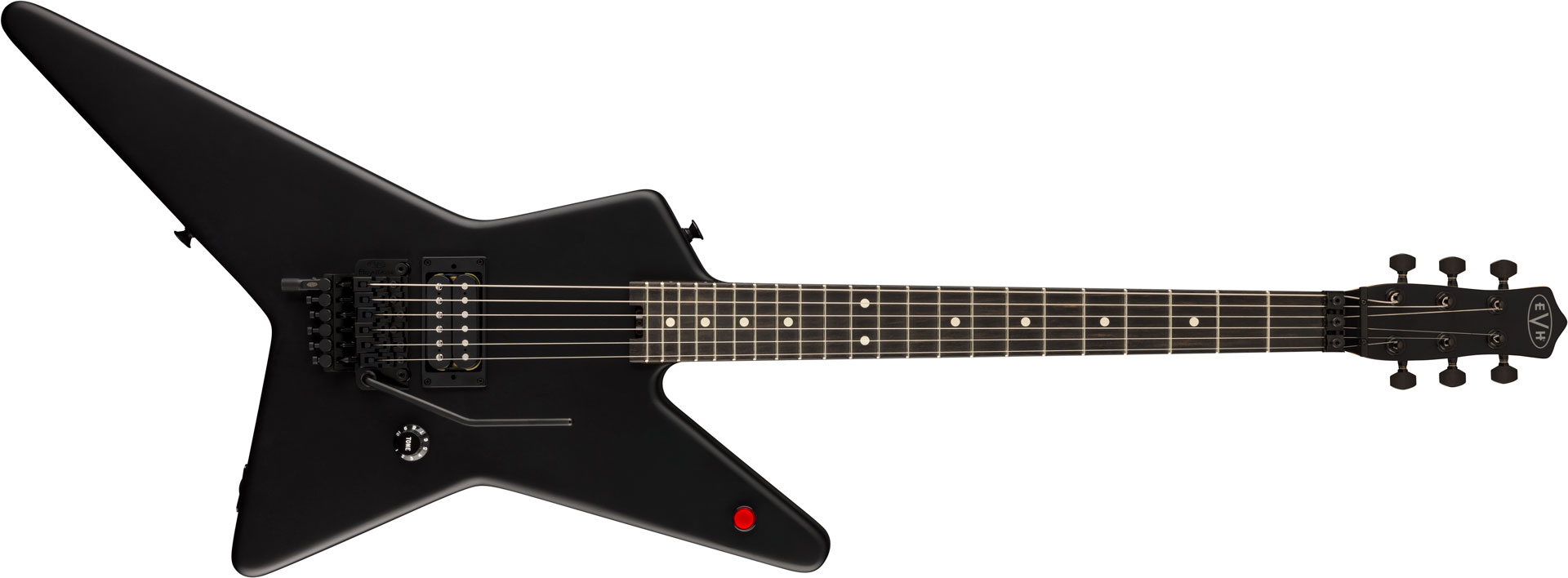A Star is re-born: EVH’s limited edition offset is inspired by Eddie Van Halen’s mad Charvel and Danelectro combo
The single pickup Star reprises Ed’s 1980 fan favorite, The Star, as seen on that year’s World Invasion tour

EVH has debuted a limited edition offset that reprises a Van Halen fan favorite, the Star – a heavily modded, custom electric guitar that made its debut during the band's 1980 World Invasion tour.
Pitched by EVH as “a modern interpretation of one of the guitars that Eddie Van Halen used to attain the early Van Halen sound,” the instrument channels the essentials of the Star build.
Chief among them is an eye-catching blend of a Charvel Star body and a Danelectro-style neck, which is augmented with a single humbucker and a Floyd Rose fitted with a D-Tuna vibrato setup.
While Van Halen used an existing Charvel body to create his 1980 model, he is – to be fair – credited with inventing the guitar that inspired Charvel’s Star shape in the first place.
As such, the Star’s true predecessor is the heavily modded 1975 Ibanez Destroyer that Van Halen nicknamed ‘The Shark’, after he carved a jaw-like saw-toothed wedge out of the tail-end of the body.
However, EVH confessed he went off The Shark after his mods irrevocably altered its sound, all which is what led to the creation of the original 1980 Star, ahead of Van Halen’s tour in support of their third album, Women And Children First.
“I made the mistake of taking a chainsaw to it and putting a bunch of weird stuff on it,” he told Guitar Player in 1980 (via The Mighty Van Halen). “It lost the tonality I want... that distinct little tone that I look for that was cut out of the guitar. Then I went to Charvel and bought the parts for a Destroyer with a vibrato.”
All the latest guitar news, interviews, lessons, reviews, deals and more, direct to your inbox!
This was all commemorated by EVH when it reissued a Striped Series Star in 2015 (seen in the clip above) and Striped Series Shark replica in 2020.

Back to the present day and, while the new Star might lack EVH’s iconic striped finish, it is otherwise a smart-looking construction.
The basswood body is paired with a quartersawn maple neck with an ebony compound radius fingerboard – and check out that Danelectro-style headstock.

The onboard humbucker is an EVH Wolfgang, while the controls are limited to a single volume pot (a la the Frankenstrat) and a momentary kill switch on the lower horn, for arcade-style, button-mashing fun.
Finally, on the hardware front, there’s the aforementioned top-mounted Floyd Rose tremolo system, complete with a D-Tuna – an innovation of Van Halen’s that allows you to quickly drop your low E to a D tuning.
The Star comes in four finishes – Matte Army Drab, Primer Gray, Black, and Stealth Black with gold hardware. The latter is the one that grabs our attention, but then, we’re fancy like that.




There’s no word on just how limited the production will be, but we do know that you can expect to pay $1,399 to secure one.
For more information on the Star and other new lines – like the firm's new Relic Series Frankenstein models – head to EVH.

Matt is Deputy Editor for GuitarWorld.com. Before that he spent 10 years as a freelance music journalist, interviewing artists for the likes of Total Guitar, Guitarist, Guitar World, MusicRadar, NME.com, DJ Mag and Electronic Sound. In 2020, he launched CreativeMoney.co.uk, which aims to share the ideas that make creative lifestyles more sustainable. He plays guitar, but should not be allowed near your delay pedals.

